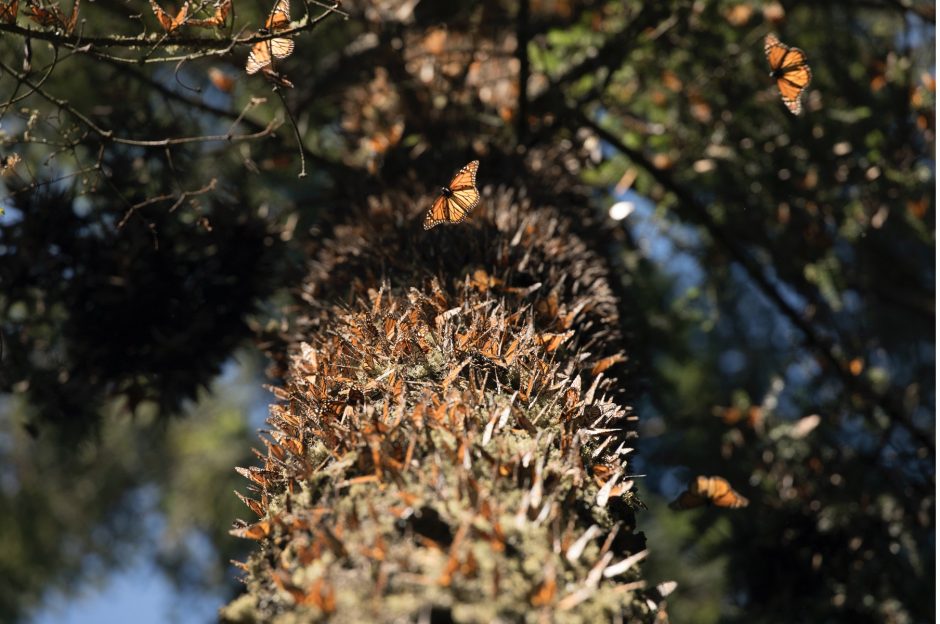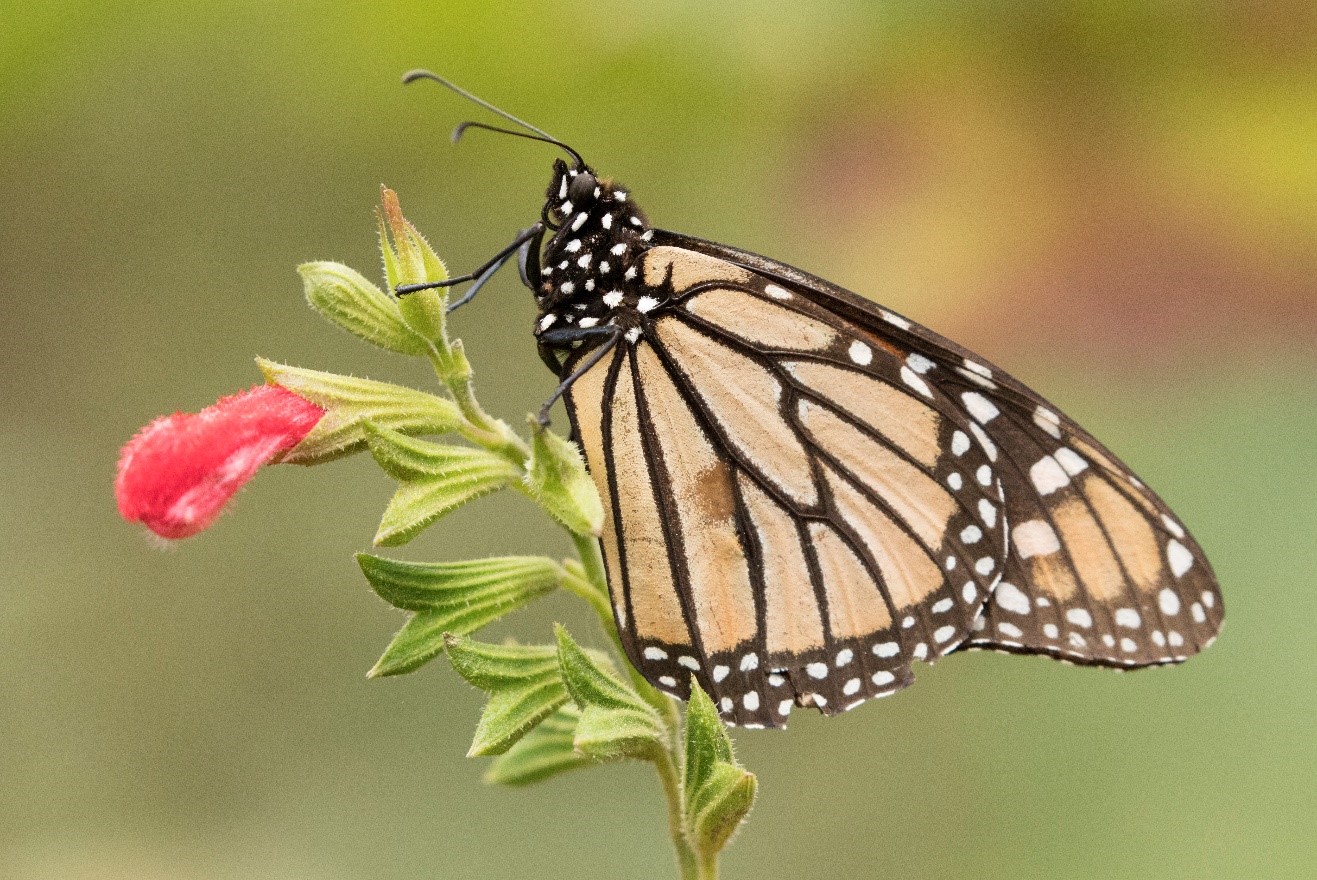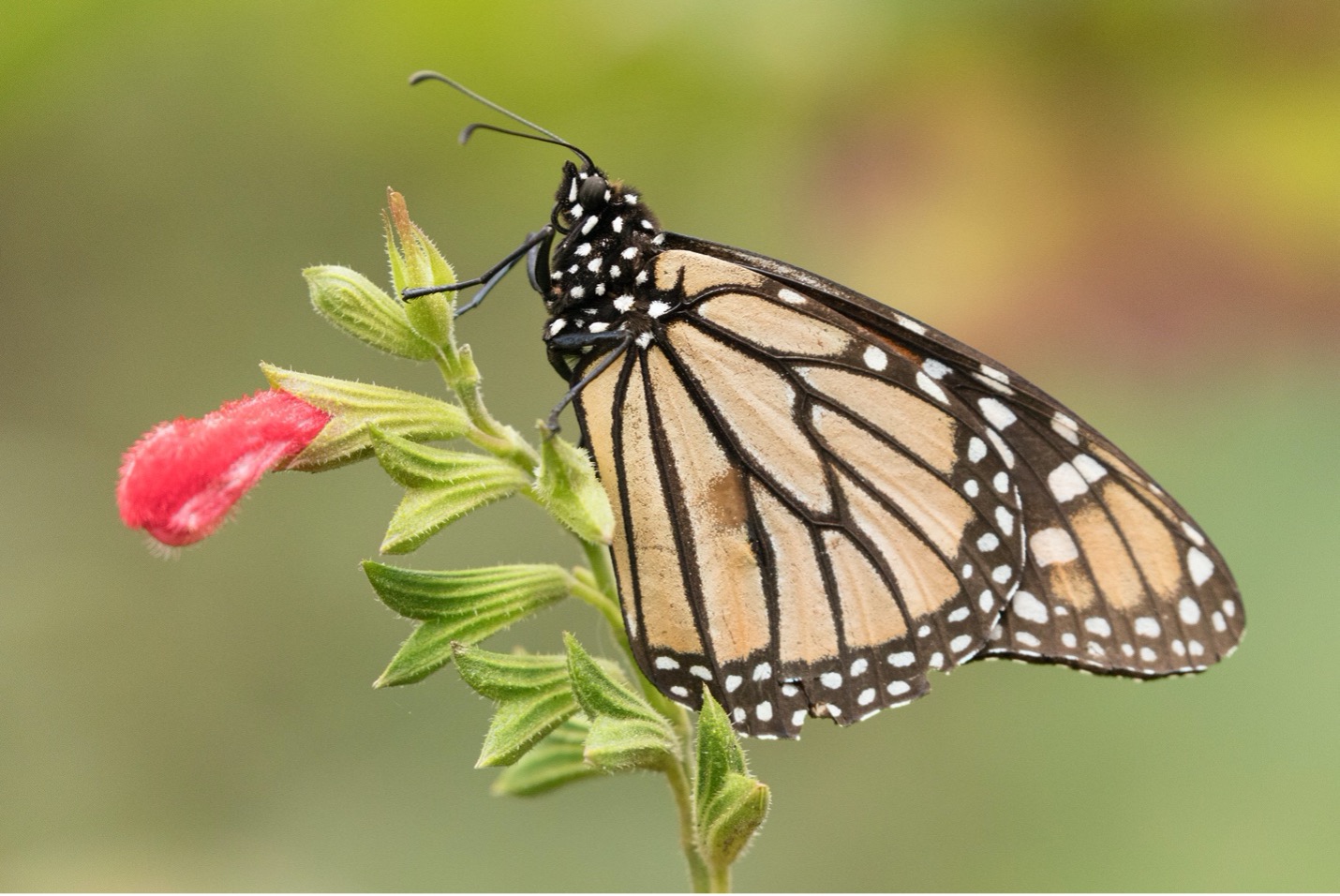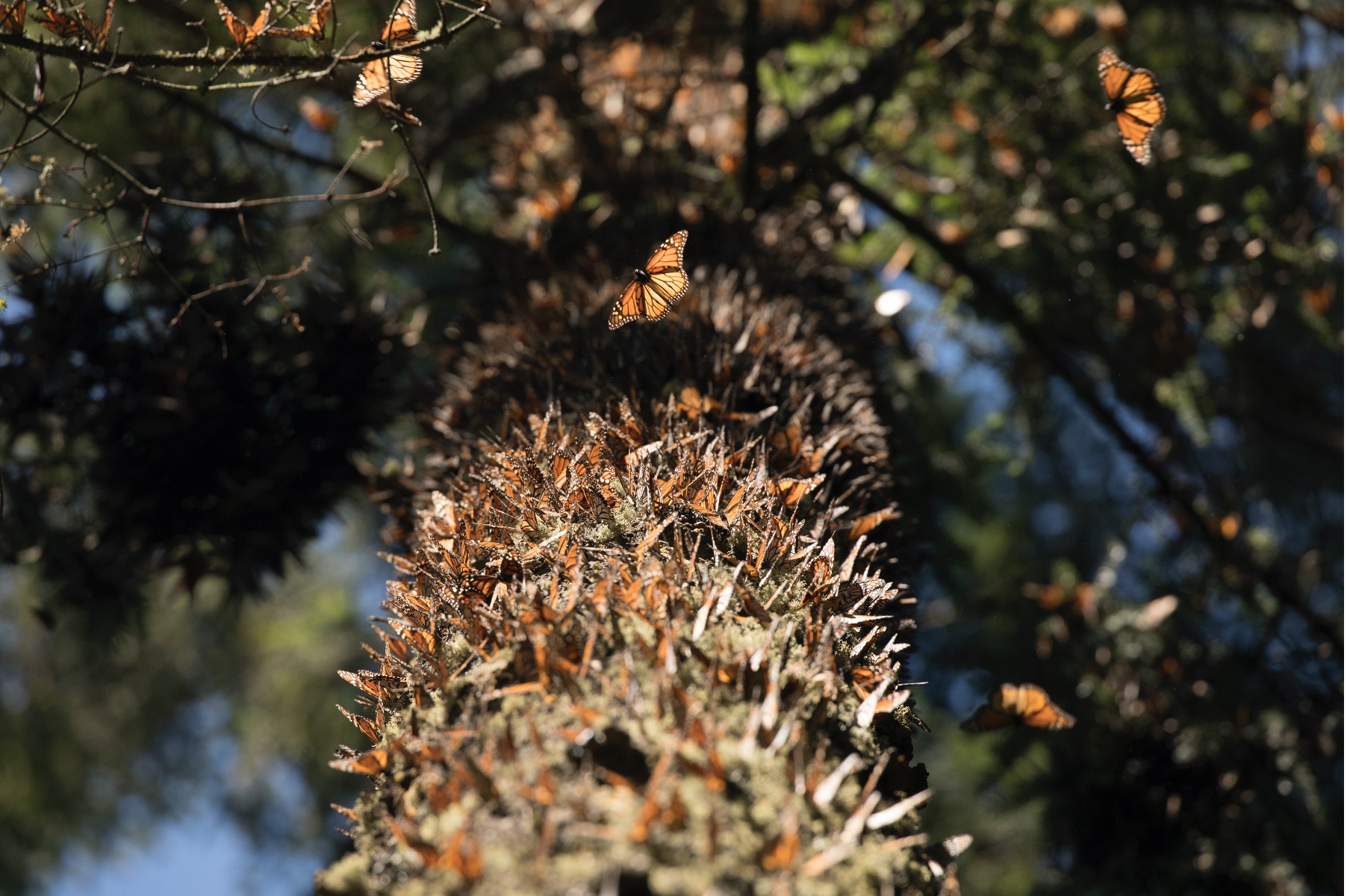
What’s in my camera bag? Monarch Butterfly Migration Photo Adventure
As I write this, millions upon millions of monarch butterflies are migrating down to their winter home, high in the Mexican Sierra Madres. In a couple months, they’ll cover the forest in their striking orange and black pattern turning an already beautiful region into something more like a work of art.
I hope every nature photographer gets the chance to go down there at some point to photograph this spectacle, as it’s one of the most extraordinary phenomena on earth.
To capture its brilliance in all ways, you’ll need to have the right gear. While a point and shoot camera like the advanced Sony RX10 IV is a one-stop-shop, those of use with DSLRs and mirrorless cameras should carefully consider which lenses are most versatile and essential. Read on for a deep dive into what camera gear you need for photographing the monarch butterfly migration.
Please note, photographic styles vary, as do conditions on the ground. While this is meant to be a guide for choosing your camera gear, you should consider your own photographic interests first and foremost.

Wide angle vs. Ultra-wide angle
First off, this need not be one or the other…you can indeed bring both, as both are quite useful. But like most things, there is a trade-off.
While an ultra-wide angle (10-22mm for crop, 16-35mm for full frame) can give you those unique perspective shots of close-up butterflies or big sky shots, it’s relatively non-versatile when it comes to anything at distance.
While a general wide angle (18-55mm for crop, 24-105mm for full frame) thrives in conditions demanding versatility, and even has a pretty good wide end of the spectrum, it just can’t quite capture the full picture like an ultra-wide.
My advice? Bring both! But if you must choose one or the other, I do believe a general wide angle lens is more helpful due to having some extra range at the distance end.
However, as you’ll see from the rest of my advice here, you may not have too many other lens selections to choose from, so indeed bringing both classes of wide angle may be extremely appropriate for a monarch butterfly photo trip.

Zoom telephoto
Most people are surprised when I say that this is actually your most useful lens for the trip. With the tremendous forest and butterflies everywhere, wouldn’t a wide-angle be your workhorse? Not necessarily.
See, the monarch forests are immense. And with that immensity comes some challenging light conditions—lights and shadows predominate. A zoom telephoto (my favorite is the 100-400mm range) helps you zoom in on one lighting scheme so that you can eliminate the harsh contrasts that often mottle the environment.
The other reason is that clusters of monarch butterflies are everywhere. While some will be close by, others could be across trails, small gorges, or way into the treetops. In other words, they are likely to be in places inaccessible by a wide-angle alone.

But perhaps my favorite reason for using a telephoto for monarchs is that you can fill-the-frame with monarchs in extraordinary fashion, making the colony look like wallpaper, or a carpet of living, spectacular butterflies.
Super telephoto
I added this section here simply because super telephotos (500mm or 600mm primes) are normally commonplace for traditional wildlife photography. While it may be nice to have a 600mm capability while photographing monarchs, it’s not necessary and the challenge of horseback riding and hiking with these larger prime lenses can be troublesome.
However, I do realize that with the advent of new mirrorless systems, big 500mm and 600mm primes are coming down in size quite considerably. Still, though, my preference is strongly in favor of the versatility of something like a 100-400mm (70-300mm and 200-500mm ranges are good, too…it’s the range of zoom that is most helpful, not just the minimum or maximum focal length).
X-factor lenses
For nearly every trip I guide, I will bring an x-factor lens. This is a lens that isn’t critical, or even one I may use every day, but often will give me that special perspective that could yield the photo or photos of the trip.
For monarch migration photography, one x-factor lens is the ultra-wide angle, which I’ve made a case for above.

The other lens I often bring is a dedicated macro setup, like my 100mm f/2.8 macro. Obviusly the most unique photos to be had are those of the colonies and sheer numbers of butterflies. However, because you will be able to get so close to individual monarchs, a macro can be a welcome addition to your kit. The only hang-up here is that you cannot use a macro flash in the reserves, so you’ll have to be creative in how you harness light to maximize depth of field.
Flashes
As I’ve mentioned above, these unfortunately are not allowed in the sanctuary—but it’s for good reason, as local guards are extremely protective of the health and well-being of their monarchs…a wonderful thing indeed!
Tripods
There are uses for a tripod during monarch photography, but there are also drawbacks. The main drawback is just how cumbersome it is to ride horseback and hike with a tripod.
The second is moving throughout the colony while constantly expanding and collapsing your tripod.
If neither of these is enough of a deterrent, than a tripod could come in handy, especially for taking long videos of butterflies flying through the air or bursting from tree limbs.

Other accessories
One word—SMARTPHONE! (or is that two words?)
Smartphone cameras can do amazing things and they’re getting better every year. They are becoming particularly good with dynamic range—bringing out the lights in darks, and darks in lights. Considering what I’ve mentioned before about the difficulties with high contrasts in the reserves, your smartphone may be your best “landscape lens” out there!
In addition, using your slow-motion feature for taking video can get you some incredible video of butterflies soaring through the air. I highly recommend everyone try this a few times over the course of your days in the monarch migration colonies.
And that’s about it! Compared to your “typical” wildlife photography trip, you can go a little lighter with this one. However, don’t leave your trusty zoom telephoto at home, as it will likely deliver you 70% of all your best shots.
If you are headed to photograph these little beauties be sure to look out for me in the colonies, as I’ll be headed to guide a couple trips with Natural Habitat Adventures in winter 2022.
Hope to see you out there!

Court
Leave a reply